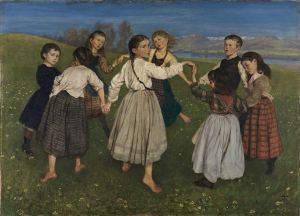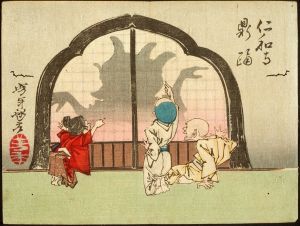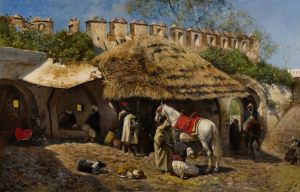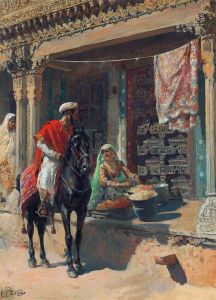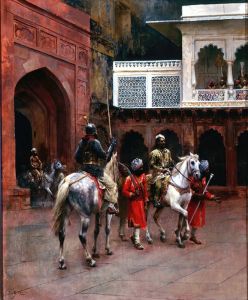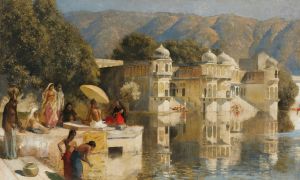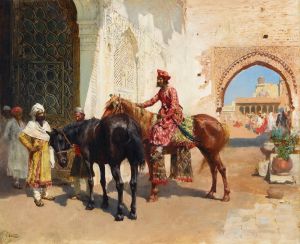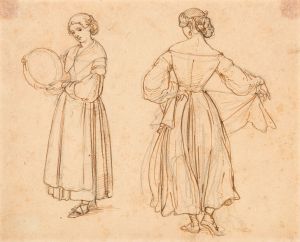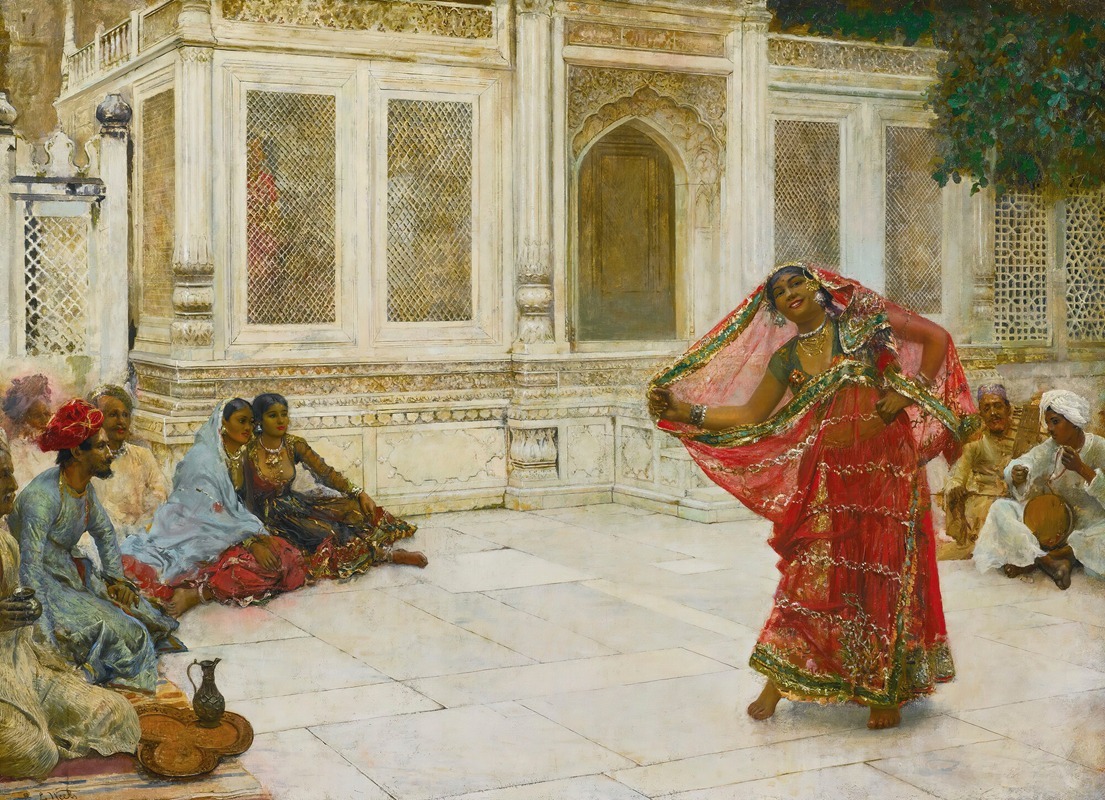
Dancing Girl, India
A hand-painted replica of Edwin Lord Weeks’s masterpiece Dancing Girl, India, meticulously crafted by professional artists to capture the true essence of the original. Each piece is created with museum-quality canvas and rare mineral pigments, carefully painted by experienced artists with delicate brushstrokes and rich, layered colors to perfectly recreate the texture of the original artwork. Unlike machine-printed reproductions, this hand-painted version brings the painting to life, infused with the artist’s emotions and skill in every stroke. Whether for personal collection or home decoration, it instantly elevates the artistic atmosphere of any space.
Edwin Lord Weeks was an American artist known for his Orientalist paintings, which often depicted scenes from his travels in the Middle East, North Africa, and South Asia. Born in Boston in 1849, Weeks developed an early interest in art and travel, which led him to study painting in Paris under the tutelage of renowned artists such as Jean-Léon Gérôme. His works are characterized by their vibrant use of color, attention to detail, and the ability to capture the essence of the places and people he encountered.
One of his notable works is "Dancing Girl, India," which exemplifies his fascination with the Indian subcontinent. Weeks traveled extensively in India during the late 19th century, a time when the country was under British colonial rule. His journeys took him to various regions, where he immersed himself in the local culture and traditions, often documenting them through his art.
"Dancing Girl, India" is a painting that captures a moment of cultural expression. The artwork depicts a female dancer, a subject that intrigued Weeks due to the rich tradition of dance in Indian culture. Indian dance forms, such as Bharatanatyam, Kathak, and Odissi, have a long history and are integral to the cultural heritage of the region. These dances are not merely forms of entertainment but are deeply rooted in religious and spiritual practices.
In Weeks' painting, the dancer is portrayed with a sense of grace and movement, reflecting the fluidity and expressiveness that are hallmarks of Indian dance. The artist's attention to detail is evident in the intricate costume worn by the dancer, which is adorned with traditional jewelry and fabrics that suggest opulence and cultural specificity. The background of the painting, while not the focal point, provides context and depth, hinting at an architectural setting that might be reminiscent of the grand palaces or temples where such performances could take place.
Weeks' ability to capture the essence of his subjects was not merely a result of his technical skill but also his genuine interest in and respect for the cultures he depicted. His works are often praised for their authenticity and lack of the exoticism that characterized many Orientalist paintings of the time. Instead of imposing a Western perspective, Weeks aimed to present his subjects with dignity and accuracy.
"Dancing Girl, India" is a testament to Weeks' artistic vision and his commitment to portraying the beauty and complexity of the cultures he encountered. The painting is part of a larger body of work that contributes to our understanding of 19th-century Orientalism and the Western fascination with the East. Today, Weeks' paintings are appreciated not only for their aesthetic qualities but also for their historical significance, offering insights into the cultural exchanges that took place during a period of global exploration and colonial expansion.
While specific details about the exact location or inspiration for "Dancing Girl, India" may not be extensively documented, the painting remains an important piece within Weeks' oeuvre, reflecting his enduring legacy as an artist who bridged cultural divides through his art.





